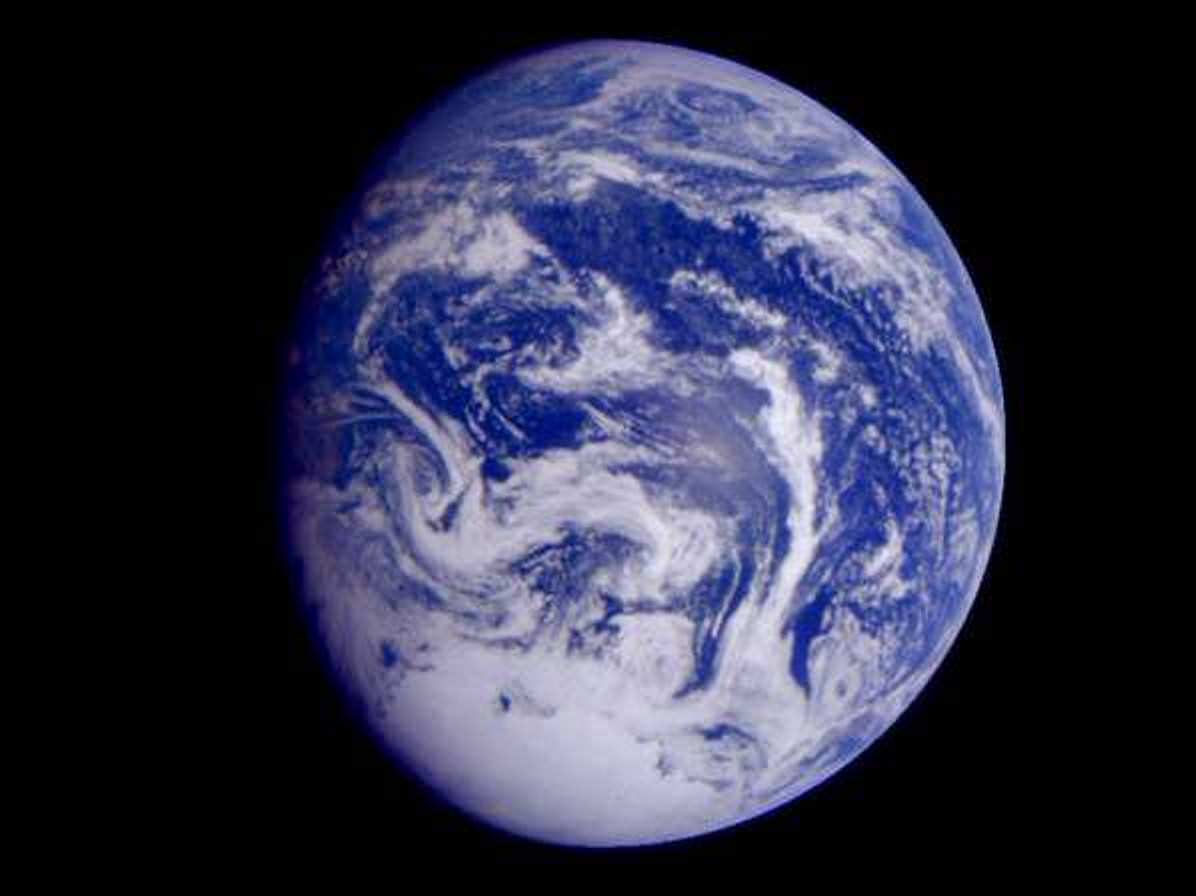[/caption]
No, this isn’t a movie about robots. The terminator is the line that separates day from night on an object lit by a star. You can see evidence of this terminator when you look at the Moon. When we see the Moon, half in light and half in darkness, we’re seeing the terminator line going right down the middle of the Moon.
From our perspective here on Earth, we see the Sun rise from the East, go through the sky and then set again in the West. But if you could see the Earth from space, you would see half the planet is always illuminated, and half the planet is always in shadow. Since the Earth is rotating, we can watch different parts of the planet illuminated, and other parts darkened. The people on the surface of the planet are experiencing the Sun moving through the sky, but really it’s them who are doing the moving.
The location of the terminator depends on the axial tilt of the object. Since the Earth is tilted by 23.5° away from the Sun’s axis, the position of the terminator changes depending on the season. During summer in the northern horizon, the Earth’s north pole never goes into shadow, so the terminator never crosses the pole. And then in winter in the northern horizon, it never comes out of shadow.
If you could orbit the Earth, just above the equator, you would see the terminator line speeding away at approximately 1,600 km/h (1000 miles per hour). Only the fastest supersonic aircraft can match the terminator’s speed. But as you get closer to the poles, the terminator moves more slowly. Eventually at the poles, you can walk faster than the speed of the terminator.
When you see a terminator from afar, it can tell you a lot about a planet or moon. For example, the Earth’s terminator is fuzzy. This means that our planet has a thick atmosphere that scatters the light from the Sun. The Moon, on the other hand, is airless, so its terminator is a crisp line. When you’re standing on the surface of the Moon, it’s either bright or dark, not the in-between twilight that we experience here on Earth.
We have written many articles about the terminator for Universe Today. Here’s an article about why the Sun rises in the East and sets in the West, and here are some Earthrise photos.
If you’d like more info on Earth, check out NASA’s Solar System Exploration Guide on Earth. And here’s a link to NASA’s Earth Observatory.
We’ve also recorded an episode of Astronomy Cast all about planet Earth. Listen here, Episode 51: Earth.
Reference:
NASA Earth Observatory

